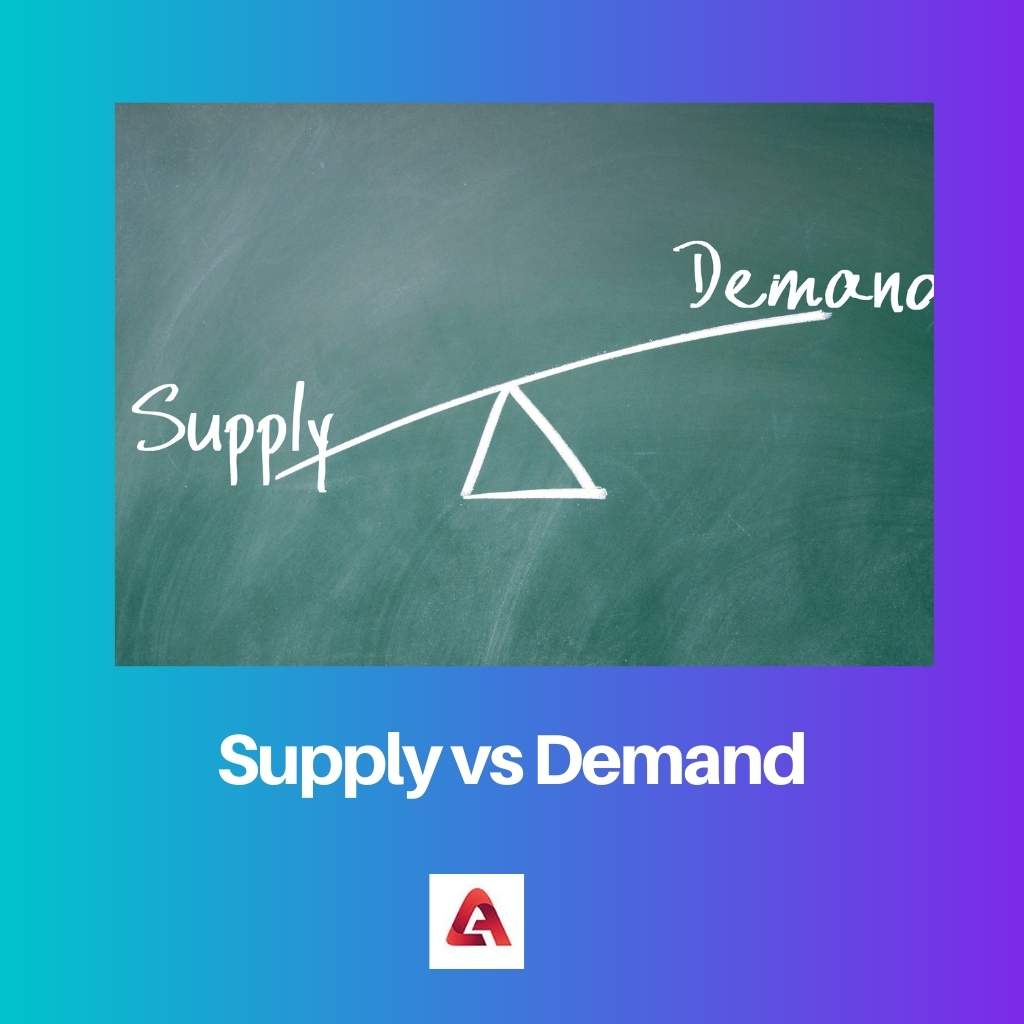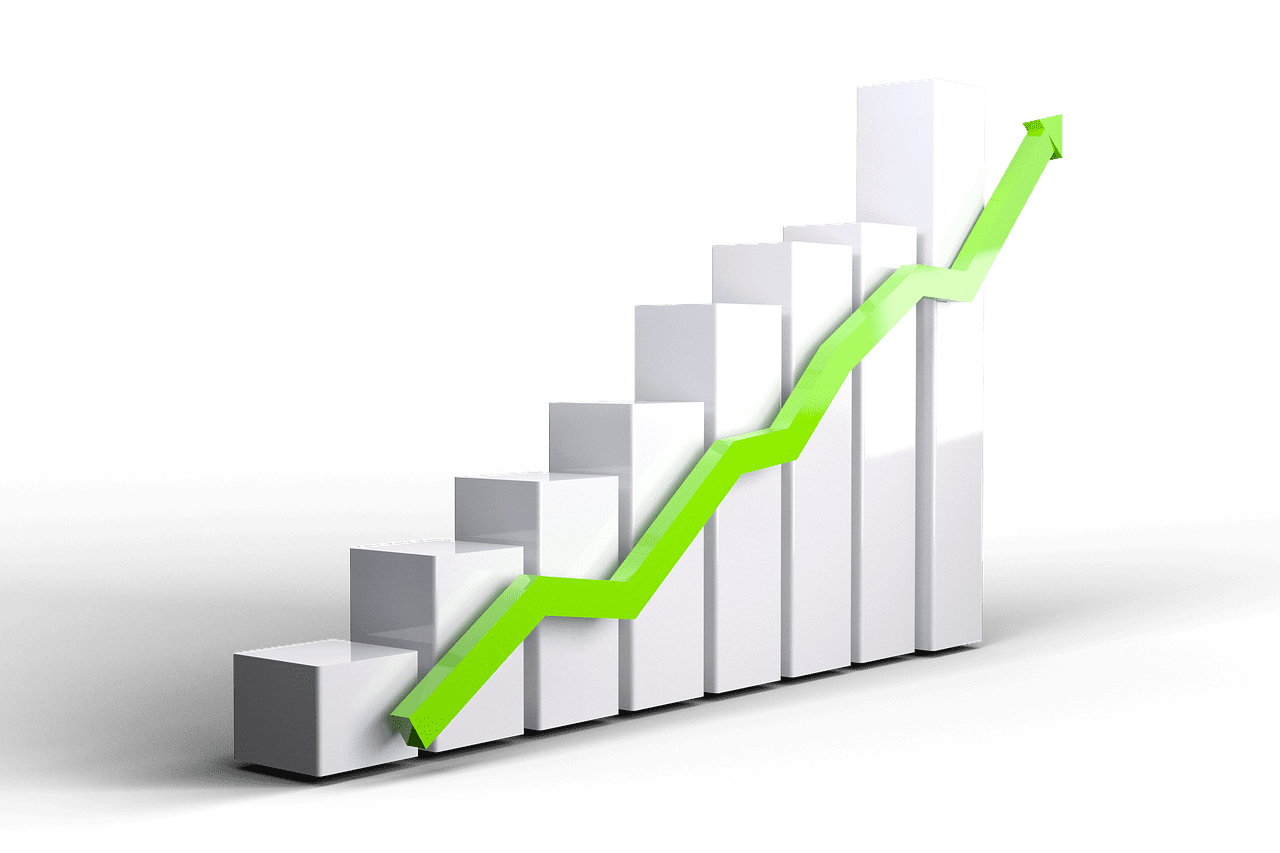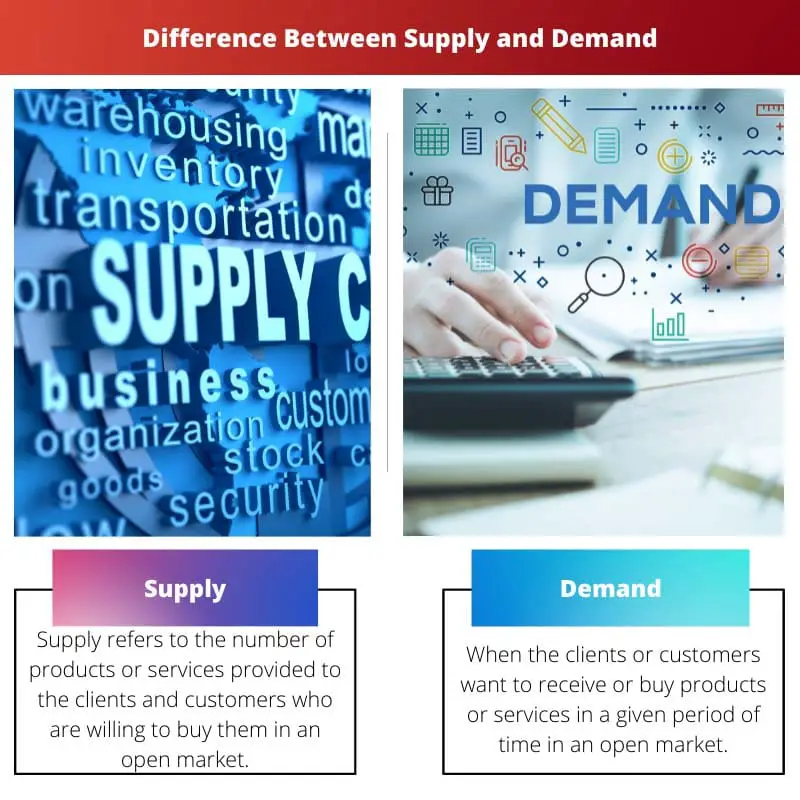There are many Economic factors on which any country is based. They are the basic factors that help in regulating the market as well as the exports and imports.
Such two macro-economic factors are Supply and Demand; bankers use economists and are a discussion point. They are interrelated to each other yet very different from each other.
Key Takeaways
- Supply refers to the amount of a product or service available in the market, while demand refers to the desire or need for that product or service.
- When the supply of a product is high and the demand is low, the price decreases, while when the supply is low, and demand is high, the price increases.
- The equilibrium point is where supply and demand are equal, and the market balances.
Supply vs Demand
The difference between supply and demand is that supply refers to the amount of the products required by the customers, and Demand refers to the need for the products which the suppliers are expected to supply. Supply and Demand are inversely related, and when one goes up, the other goes down.

Supply is supplying the products and commodities for the customers to use on their demand. They are increased when the price increases, and usually, when the demand increases, the supplies go down.
This shows how much suppliers can give and make available the products to the customers and their willingness about the product.
Demand is the needs and wants of the customers and buyers for products at a specific period. The more the customers like the products, the more the demand will be.
If the price increases, then the demand will also decrease. Demand represents how much the buyer likes the product and their preferences.
Comparison Table
| Parameters of Comparison | Supply | Demand |
|---|---|---|
| Definition | Supply refers to the number of products or services provided to the clients and customers who are willing to buy them in an open market. | When the clients or customers want to receive or buy products or services in a given period of time in an open market. |
| Inter-relationship | When the supply becomes surplus, the demand gets decreased. | When the demand is high, the supply goes less. |
| Represents | It represents that how much are sellers are willing. | It represents that how much the customers and buyers are willing for the products. |
| Effects of price | When the price increases, the supply also increases and is related positively to the price. | When the price falls, the quantity of demand increases and is inversely related to price. |
| Curve | It is always represented as upward sloping. | It is always represented as downward sloping. |
What is Supply?
Supply is the amount and quantity of commodities and products to be given and sold to the buyers and customers at a specific period of time.
Laws regarding the Supply of products state that the higher the price of the goodwill is, the higher the quantity of the products to be supplied. The supply is positively proportional to the price of the goods.
When talking about the supply curve, there remains an upward-sloping curve. The supply increases when the demand is high and goes down with the decrease in demand, leading to a shortage.
There are certain factors on which the supply is based, such as the price of the commodities or services, the number of suppliers in the market, any changes made in the technology, status of nature, price increment in the future, etc.
Usually, the bargaining power of the suppliers in the market drives the supply of the products. Supply not only represents the willingness of the suppliers but also tells about how much the products are able to be supplied for the given period of time.

What is Demand?
Following the opposite from that of the supply, Demand is the willingness of the customers to buy any product and service that they want.
The laws about Demand say that the higher the price of the products, the lower will be the demand for that product and good. They are inversely and negatively related to the price as less demand will be there.
If the supply of the products is the same and demand increases, there will be shortages and vice versa. The sloping curve is always downward for demands.
There are also some factors that influence the demand, such as how much income the customers have, the buyer’s taste and preferences, the price of other and related goods in the market, the population of the area, the number of substitutes that can be used in place of the original, etc.
It all deepens the bargaining power of the customer for the given product.

Main Differences Between Supply and Demand
- Supply is termed as making available the products or services to the user and customers for them to use, whereas Demand is termed as the need of the product or services by the customers to the sellers for them to use.
- Supply is positively related to price and increases as the price increases, whereas Demand is inversely related to price, and the demand becomes lower when the price goes high.
- The supply curve is an upward slope, whereas Demand is represented as a downward slope.
- Supply represents the willingness of the sellers and firms to sell the products, whereas Demand expresses the willingness of the customers and buys for the products.
- Both supply and demand are inversely related, and when one goes high, the other one goes low.
- Supply is derived from the bargaining power of the one who supplies the product, whereas Demand is derived from the bargaining power of the buyer of the products.
- Supply is the representation of the stock availability of the product by the seller in the market, whereas Demand is the representation of the tastes and preferences of the customers and buyers for the products.


The content is a well-structured explanation of supply and demand, providing a comprehensive overview of the topic. The differentiation between supply and demand is articulated with precision, making it a valuable read for anyone seeking clarity on this subject.
Indeed, the article is a testament to the author’s scholarly command over the topic. The detailed illustration of the supply and demand curves and the underlying factors affecting them is commendable.
It’s evident that the author’s knowledge and expertise in economics have contributed to the lucid elucidation of supply and demand. The insights provided in this article can undoubtedly enhance one’s understanding of economic principles.
I believe the article offers a comprehensive comparison between supply and demand, providing a clear understanding of their implications. The discussion of the main differences between the two concepts is particularly enlightening.
Absolutely, the comparison table lays out the parameters of comparison, effects of price, and the representations of supply and demand very clearly. It helps readers grasp the concepts more effectively.
The article provides an in-depth analysis of the concept of supply and demand, explaining how the two macro-economic factors are interrelated yet different. This is important to understand the functioning of the market and economic regulation.
I couldn’t agree more. The detailed explanation of the laws governing supply and demand, and the various factors that influence them, is very informative and provides valuable insights.